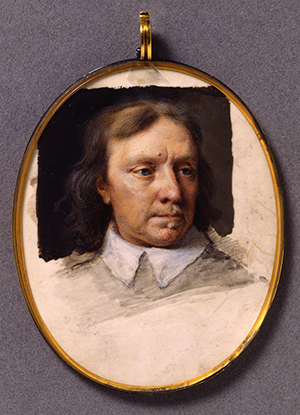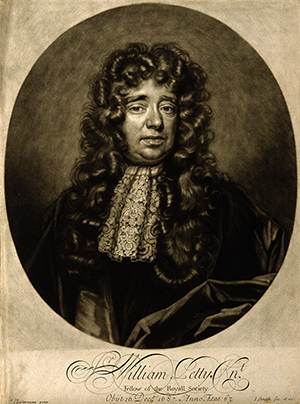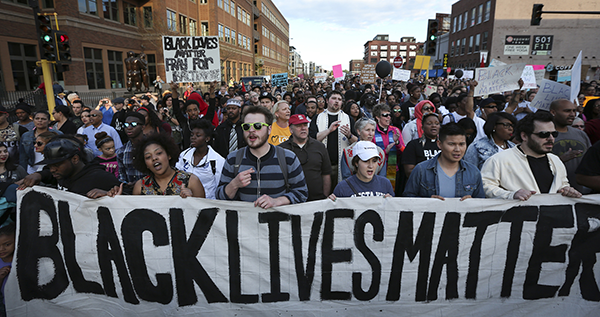The curse of Cromwell: revisiting the Irish slavery debate
Published in 18th-19th Century Social Perspectives, Early Modern History Social Perspectives, Features, Issue 4 (July/August 2017), Volume 25The real history of Irish slavery on Barbados highlights how much worse slavery was for Africans in the Americas, reminding us that the curse of Cromwell has haunted more than just Irish history.
By John Donoghue

Above: Oliver Cromwell—oversaw the first wave of colonial transportation to the Caribbean. (Buccleuch Heritage Trust)
Cromwell himself oversaw the first wave of colonial transportation to the Caribbean. Writing to parliament after leading the slaughter at Drogheda in September 1649, the general reported that the ‘officers were knocked on the head, and every tenth man of the soldiers killed, and the rest shipped for the Barbadoes’. Slipping easily into imperial voice, Cromwell argued that massacre and transportation were benevolent forms of terrorism, as they would frighten the Irish into submission and thus ‘prevent the effusion of blood for the future’.
‘My Day of Ruin Forever Until I Die’
In the 1650s, the Kerryman Éamonn an Dúna worked the curse of Cromwell into poetic form. In a piece he entitled ‘My Day of Ruin Forever Until I Die’, he made sure to link the forced removal of Catholics to Connacht with their forced labour in American colonies. Mixing English and Irish in his verse, an Dúna wrote that if the English did not ‘shoot … kill … strip … tear … hack … [or] hang …’ tories, rebels and priests, they would ship them to the colonies ‘chum tobac do dhéanamh’ [to make tobacco grow] … Transport, transplant, mo mheabhair ar Bhéarla [that’s my memory/understanding of English]’. While the English construed Irish colonisation as the work of God, an Dúna reconstrued it as a curse. Drawing upon the colonial experience of forced migration and forced labour, the poet produced an early example of the diasporic lament, a staple of both popular ballads and the poetry of Irish dispossession.
Irish historians with nationalist leanings were less lyrical and more clinical about the curse. They strove to connect the symbolic ‘enslavement’ of the Irish body politic under British colonialism to the enslavement of Irish bodies in the colonies. In 1723 Fr Cornelius Nary estimated that ‘fifteen thousand to twenty thousand souls’ had been transported into ‘slavery’. The United Irishmen blamed Cromwell for the ‘many thousands transported to foreign parts’, especially ‘Barbadoes’. By the twentieth century the estimates had grown much higher. In Ireland under English rule (1903), Thomas Addis Emmet, the American grandson of the United Irishman of the same name, claimed that 120,000–130,000 were shipped to the colonies. A year later, in The fall of feudalism in Ireland, Michael Davitt recorded that ‘all the Irish who could not be shipped off to England’s colonies in America and the West Indies as slaves were hunted remorselessly into Connaught’. James Connolly wrote in The re-conquest of Ireland (1915) that ‘over 100,000 men, women and children were transported to the West Indies, there to be sold into slavery upon the tobacco plantations’. The soaring estimates paralleled the increasing radicalisation of Irish nationalist goals, whereby the case for an independent Ireland could be made stronger in relation to the number of Irish enslaved in the colonies.
Liam Hogan’s contribution to the debate
In recent years, right-wing whites have inundated social media and cyberspace with the lie that Irish ‘slavery’ was worse than that suffered by Africans. We know about the extent of the problem thanks to Liam Hogan’s investigation of the ‘Irish slave meme’. Beginning in 2015, Hogan published several articles (one in this magazine [HI 24.2, March/April 2016, pp 18–22], co-authored with Matt Reilly and Laura McAtackney) and a six-part on-line series. He cites many examples of how some Irish, Irish-Americans and other white Americans equate Irish bondage with perpetual, racial slavery or claim that it was worse. Indeed, as Hogan found, most of these bloggers and tweeters believe ‘that slavery is not about race’. That certainly would have been news to the approximately twelve million Africans who endured the Middle Passage to the Americas from the early sixteenth century through to the late nineteenth century, who, if they lived (approximately two million of them perished), faced perpetual slavery for themselves and their children, something whites never or almost never experienced. ‘White slaves were treated worse than any other race in the United States’, reads one meme, which is preposterous on its face for a host of historical reasons, not the least of which would be the US Supreme Court’s 1857 Dredd Scott decision, where Justice Roger B. Taney ruled that the framers of the US Constitution ‘regarded (people of African descent) as beings of an inferior order’ with ‘no rights which the white man was bound to respect’. But the point here was less about the past than the present. After claiming that ‘white slaves’ suffered the worst racial treatment in the US, the blogger added: ‘When is the last time you heard an Irishman bitching and moaning about how the world owes them a living?’ Here the blogger draws upon racist stereotypes to portray blacks as freeloading parasites with a false sense of historical victimisation. The Black Lives Matter movement, organised to protest systemic cover-ups of black deaths at the hands of American police officers, has faced white nationalist attacks based on this historically skewed, racist political ideology. Although the Republican party and its ideological handlers in the right-wing media have long stoked racist resentment, now white nationalists, having become part of President Donald Trump’s base of support, have revived overt bigotry as a mainstream force in American political culture. The Irish slave meme cannot be understood apart from this political context.
Hogan has moved beyond his on-line investigation into the Irish slave meme with careful historical research to demonstrate the clear differences between Irish bondage and African slavery. While attentive to the hardships faced by Irish indentured servants, his point is that slavery was a condition reserved for people of African descent in the British Atlantic and the United States. Hogan’s fearless intervention—he has received many threats—is a case-study of how scholars should employ relevant research to combat white supremacists. But has he closed the case of the curse of Cromwell and its connection to colonial bondage?
But slavery has taken many forms

Above: William Petty—in A political anatomy of Ireland (1692) he concluded that English interests would be best served in the colonies by enslaving the Irish like ‘negroes’, but his vision never came to fruition. (Welcome Images)
Had William Petty had his way, Eamon an Dúna’s curse would have been all the more bitter and the history of race and slavery in the Atlantic world dramatically different. As a young man on the Continent, Petty had studied with Hobbes and Descartes on his way to becoming a mathematician and an instructor of anatomy at Oxford. In 1652 the English Commonwealth appointed him to assess the future value of expropriated Irish land and labour. Petty collected his findings in what became known as the Down Survey and analysed them in A political anatomy of Ireland. The 1692 tract helped lay the foundation for a new field of knowledge—political economy, which Petty called ‘political arithmetic’—that guided the rise of global capitalism. His research in Ireland and his wider knowledge of the Atlantic economy led him to conclude that, rather than destroying the Irish, English interests would be best served in the colonies by enslaving them like ‘negroes’:
‘You value the people who have been destroyed in Ireland as slaves and negroes are usually rated, viz, at about 15 one with another; men being sold for 25, children for 5 … Why should not insolvent thieves be punished with slavery rather than death. So as being slaves they may be forced to as much labour, and as cheap fare, as nature will endure, and thereby become as two men added to the commonwealth, and not as one taken away from it.’
Petty’s account proves that some very powerful members of the Cromwellian regime envisioned enslaving Irish and ‘negroes’ in parallel fashion. Significantly, in the British Caribbean, white servants made up the majority of the unfree plantation workforce until the late 1650s. The same held true in the Chesapeake until about 1690.
Servants and slaves treated equally severely
Yet Petty’s vision never came to fruition. In contrast to those of African descent, the Irish were never legally nor systematically subjected to lifelong, heritable slavery in the colonies. Richard Ligon, a planter on Barbados from 1647 to 1650, made such a distinction. But he also noted that planters bought ‘servants’ in the same way they purchased slaves from Africa, on the very ships that brought them to the island, a process known as ‘the scramble’. Both servants and slaves were summoned to the fields early in the morning, often by bells, and they both were worked into the evening. Both were subject to ‘severe overseers’ who beat them during their labours. Ligon noted that ‘I have seen such cruelty there done to servants as I did not think one Christian could have done to another’. If the servants complained, they were beaten again; if they resisted, their period of service (usually from four years to nine years) could be doubled, although terms of service were often ill defined in the case of the Irish.
Importantly, Irish servants and others from England and Scotland referred to themselves as ‘slaves’. African slaves also regarded Irish field hands as slaves. An anonymous writer on Barbados, most likely Major John Scott, wrote in 1667 that the Irish were ‘derided by the negroes, and branded with the epithet of “white slaves”’. Africans referred to the Irish as slaves, as the Irish did themselves, to reflect the brutal exploitation they endured as unfree plantation workers who, having been kidnapped or transported, were violently forced to work against their will. Irish sailors voyaging to the West Indies on commercial ventures or with Prince Rupert’s Royalist fleet in 1652 would have seen Irish people subjected to plantation bondage. In 1655, Irish sailors had themselves been transported after being captured serving with Royalist forces. Their peers petitioned the Commonwealth to release those it had ‘most barbarously … sold and sent away … for slaves into some foreign plantations’. Ligon remembered that so-called servants often found it impossible to ‘endure such slavery’.
Charles Baily agreed. Recalling his time on a Maryland tobacco plantation, he wrote how ‘hunger, cold, nakedness, beatings, whippings, and the like … laid many of his fellow labourers … in the dust … I am sure the poor creatures had better have been hanged, than to suffer the death and misery they did’. Having been kidnapped and whipped into work, Baily referred to himself as a ‘bond-slave’, a biblical term for a slave not held to lifelong bondage. Historians have been wrong in assessing such references as borrowings from seventeenth-century political speech, where ‘slavery’ described the condition of those living under tyrannical governments. Instead, in the accounts above, the slavery referred to was economic, different from the lifelong enslavement of Africans but a form of slavery nonetheless. Unfree whites who called themselves slaves or were called such by black slaves were known in law as ‘indentured servants’. But we cannot look to colonial law alone to define slavery. Whites and blacks subjected to multiple forms of chattel bondage tried to define it too, but in a much broader fashion. We should listen to their voices, and not just to those of the élites who wrote colonial law, when trying to understand slavery in the seventeenth-century Atlantic.
Irish field hands itemised as ‘goods and chattels’
Irish field hands called themselves slaves because they were the term-bound, chattel property of the planters who purchased them. They were itemised as the ‘goods and chattels’ of their masters on contracts and in estate inventories—often beside ‘negroes’, livestock, hardware and other household goods. Like ‘negroe’ slaves, they could be sold again and again without their consent. Historians have often argued that ‘servants’ weren’t bought and sold, only their contracts were. This is a legal fiction, not a material reality. Contracts did not cut sugar cane and weed tobacco fields; chattel workers did. Contracts, which kidnapped and transported people without their agreement, did not prevent enslavement. Instead, contracts led to enslavement, transforming people into term-bound chattel property. Contracts commodified more than ‘servant’ labour; they commodified the person as a species of capital collateral. Planters used ‘servants’, like slaves, as financial instruments to escape bankruptcy, to satisfy creditors, to liquidate estates, and to resolve debts and broken contracts.

Above: The Black Lives Matter movement, organised to protest against systemic cover-ups of black deaths at the hands of American police officers, has faced white nationalist attacks based on the lie that Irish ‘slavery’ was worse than that suffered by Africans.
The political ‘slavery’ of English colonialism led to the economic enslavement of the Irish on colonial plantations. Their plight is part of Ireland’s tragic colonial history, but placing it in a global perspective increases its historical importance. Racial slavery and the chattel, term bondage imposed on the Irish and other Europeans were crucial innovations in the early history of capitalism, a history where the plantation complex took centre stage. Thousands of Irish were forced to work on Barbados and in other colonies during the Cromwellian conquest. But the Cromwellian regime was also the first English government to dedicate itself to building a plantation empire based on the permanent enslavement of Africans, the form of chattel labour that would dominate the Atlantic world for the next two centuries. Race matters in the history of slavery and in the Janus-faced struggles for justice in our own time. In this light, the history of Irish slavery should lead to solidarity with—rather than scorn for—the deep history driving the Black Lives Matter movement. Interracial solidarity may be the only means by which we can lift the curse of Cromwell that still haunts the Irish in America.
John Donoghue is an associate professor of history at Loyola University, Chicago.
Read More:
Seán O’Callaghan’s To Hell or Barbados
FURTHER READING
H. Beckles, White servitude and black slavery in Barbados, 1627–1715 (Knoxville, 1989).
P. Linebaugh & M. Rediker, The many-headed hydra: sailors, slaves, commoners, and the hidden history of the revolutionary Atlantic (Boston, 2000).
S. Newman, A new world of labor: the development of plantation slavery in the British Atlantic (Philadelphia, 2013).
M. Ó Siochrú, God’s executioner: Oliver Cromwell and the conquest of Ireland (London, 2008).
















